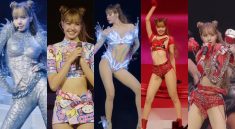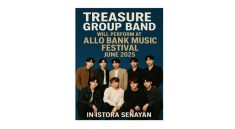El Valle Grita – Two icons. One sound. “Neon Faith” drops and the internet shakes. Charli XCX and Grimes collide in digital harmony. Their track fuses glitch with glam. Synths slice through silence. Bass echoes from Mars. And lyrics burn with neon urgency. TikTok clips surface instantly. Visualizers explode with surreal geometry. But it’s not just hype. It’s cyberpop history. This track marks an era. Where post-human voices meet post-genre beats. Critics dissect it. Fans devour it. Playlists bend around its structure. And fashion follows. “Neon Faith” isn’t just a song. It’s a signal—loud, coded, and prophetic.
Cyberpop Was Niche—Now It’s a Movement
Once dismissed as niche, cyberpop has surged forward. The genre blends electronic chaos with Y2K aesthetics. It prioritizes texture over tradition. Vocals warp, beats distort, and silence is rare. Charli and Grimes champion this. Their sonic evolution defines the space. Initially, both artists explored hyperpop edges. Now, with “Neon Faith,” they crystallize cyberpop’s identity. The track sounds alien—but deeply emotional. It fuses vulnerability with noise. That contrast defines the genre. Listeners don’t want polished pop. They want fragmentation. They seek distortion that mirrors inner turmoil. Hence, the appeal grows. Every glitch tells a story. And every beat resists perfection.
Lyrically, “Neon Faith” Channels Post-Human Longing
Beneath synthetic noise lies deep feeling. “Neon Faith” expresses disconnection. Yet also craving. Lines like “upload my heartbeat to your flame” echo digital intimacy. Grimes whispers about digital reincarnation. Charli counters with melodic resolve. Together, they construct a love song beyond biology. Their voices shift pitch mid-line. They blur gender, tone, and form. This fluidity mirrors queer digital culture. The song becomes a space. Not just for sound—but for identity exploration. Therefore, fans relate deeply. They hear themselves in modulated voices. Not despite the distortion—but because of it. In short, code becomes poetry.
Visuals Reinforce a Hyperreal Aesthetic
The music video for “Neon Faith” resembles an AI fever dream. Neon temples dissolve into pixel dust. Avatars dance in impossible physics. Cybernetic wings unfurl mid-beat. Directed by a hybrid team—one human, one algorithm—the video redefines surrealism. Grimes appears with chrome tears. Charli ascends among fractal hearts. Every frame looks painted in light. Notably, fashion elevates the imagery. Latex, fiber optics, and glitch tattoos flash onscreen. Even AR filters debuted alongside the release. Viewers can insert themselves into the video. In this way, boundaries break. Fans become part of the mythos. Screens become portals.
“Read About: The Weeknd Headlines Major Festivals in His Stage Comeback”
Fans Drive the Movement’s Evolution
Cyberpop thrives on community. Unlike legacy genres, fans shape its evolution. They remix tracks hours after release. AI-generated covers pop up instantly. Discord channels buzz with theories. Some decode lyrics like scripture. Others design 3D visuals in tribute. Moreover, TikTok fuels virality. Users dance in LED rooms. Lights pulse in sync. Challenges emerge based on transitions. Meanwhile, Reddit threads dissect visual symbolism. Is the temple Grimes enters a reference to digital resurrection? Was Charli’s voice pitched to symbolize data rebirth? These questions drive engagement. The fandom doesn’t consume passively. They co-create meaning. And artists welcome it.
Industry Watchers Take Note—and Adjust
Record labels watch cyberpop closely now. Initially dismissed as “too weird,” the genre now charts. Streaming numbers prove demand. So, the industry adapts. Labels invest in virtual concerts. VR stages host cyberpop festivals. Brands like Balenciaga and Razer collaborate with cyberpop artists. Furthermore, music production shifts. DAWs (digital audio workstations) now offer plugins mimicking cyberpop textures. New tools emerge to auto-generate visualizers. Even mastering engineers learn to work with intentional distortion. The mainstream bends. But artists like Charli and Grimes remain at the front. They don’t chase trends. They invent them. And others follow, pixel by pixel.
AI and Collaboration Redefine Creation
“Neon Faith” wasn’t made traditionally. Grimes used generative models to draft vocal harmony. Charli fed melodies through synth AI. Producers worked in decentralized time zones. The song formed across servers. Not studios. Creativity, in this realm, transcends geography. Moreover, AI doesn’t replace the artist. It extends the palette. Human emotion still drives choices. But machines amplify scope. The result is layered. Organic and synthetic. Familiar yet uncanny. “Neon Faith” shows that future pop isn’t just futuristic. It’s collaborative. Interdimensional. Alive in the cloud.



